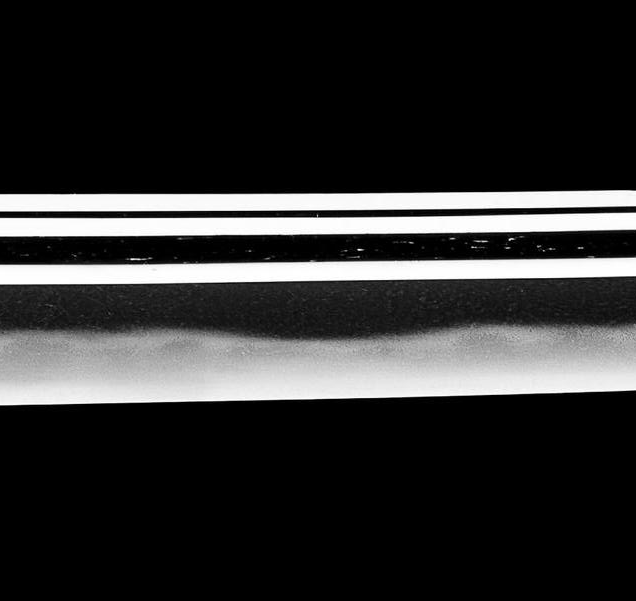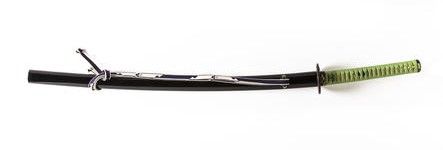Jack Loomes
Swordsperson
C.E.O. Sword-Site
Posts: 1,770 
|
Post by Jack Loomes on Dec 4, 2013 13:20:39 GMT
     Sugata (configuration): hon-zukuri, iori-mune broad, even mi-haba, thick kasane, chu-gisskai and shallow torii-zori Kitae (forging pattern): standing itame with ji-nie and copious, fine chikei Hamon (tempering pattern): gunome-midare with variations between o-gunome, kaku-baru gunome and some togari-ba with many ashi, hotsure, yubashiri, sunagashi, kinsuji and large nie Boshi (tip): sugu-ba- ko-maru on the omote and midare-komi turning togari on the ura with haki-kake and streaks of nie on both sides Horimono (carving):bo-hi on both sides Nakago (tang): o-suriage with katte-sagari file marks and three holes (two plugged) Habaki (collar): two-piece, copper Nagasa (length from tip to beginning of tang): 28 1/4in (71.7cm) Motohaba (width at start of tempered edge): 1 1/8in (2.9cm) Sakihaba (width before tip): 7/8in (2.2cm) In shirasaya (wood storage scabbard) with saya-gaki signed and dated by Tanobe Michio With certificate designating this sword as the 45th Juyo Token (Precious sword) no. 10595 issued by the Nihon Bijutsu Token Hozon Kyokai (The Society for the Preservation of the Japan Art Sword), dated 1999.10.29. Naotsuna was traditionally considered to be one of the ten great students of Masamune. Although the two probably had no direct connection, the swords that are accepted as being the work of Naotsuna exhibit traits typically seen in Soshu blades, such as chikei and sunagashi both seen on this example. This sword is a broad, wide, and weighty piece with much activity in the temper and with a finely forged body, characteristically seen in the work of Naotsuna. Source: www.bonhams.com/auctions/20503/lot/1138/ |
|
.png?width=1920&height=1080&fit=bounds)